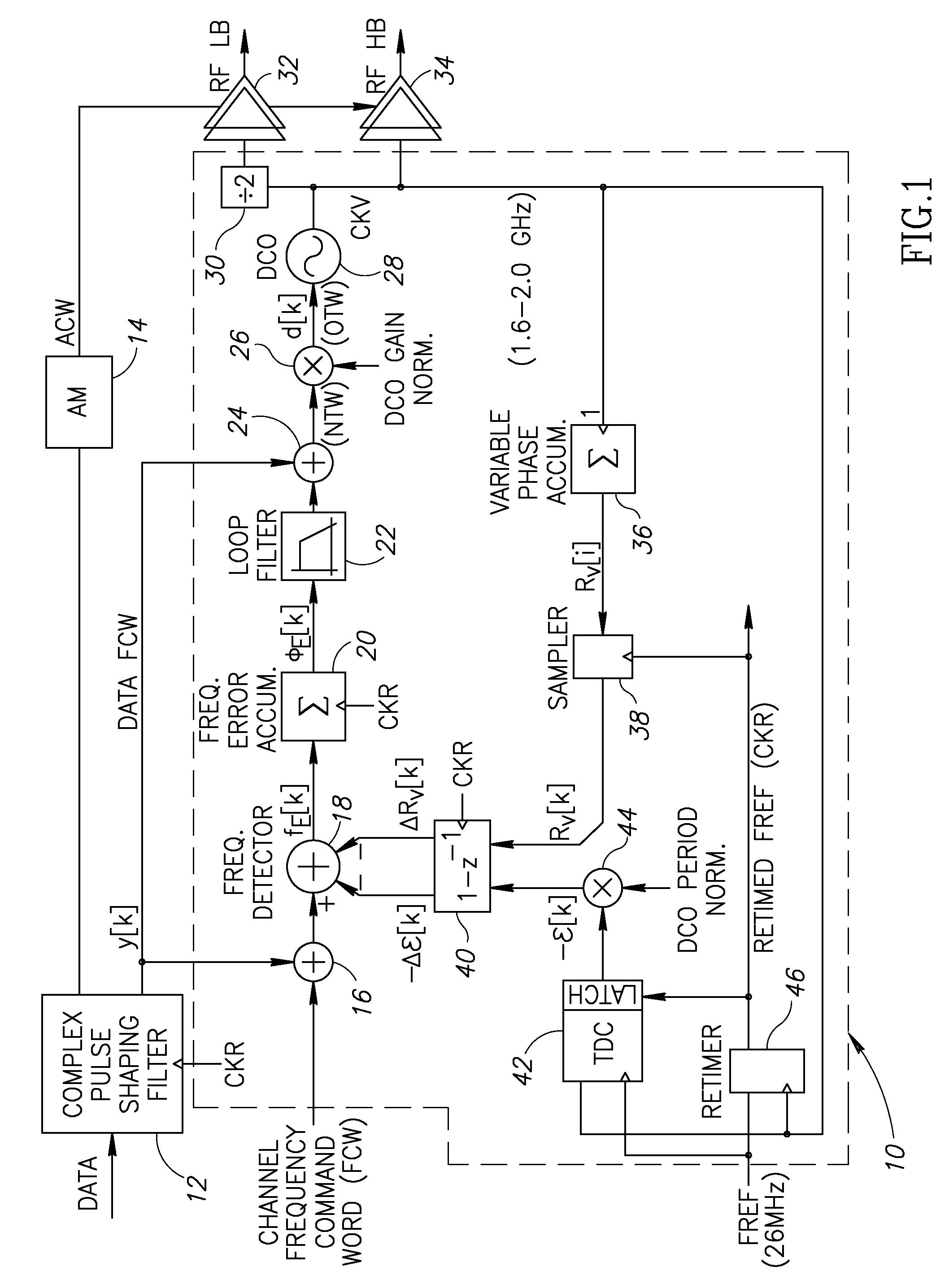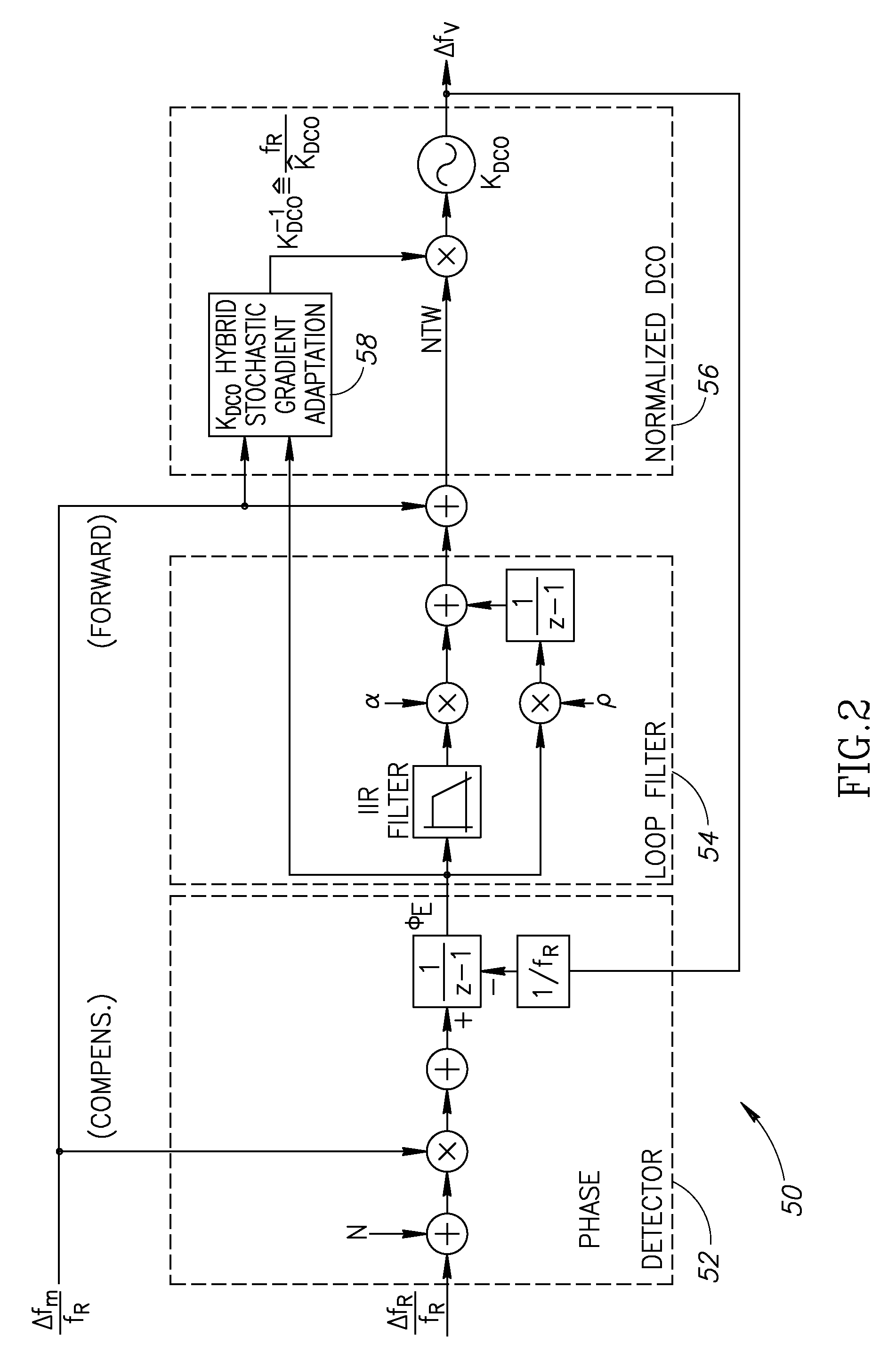Hybrid stochastic gradient based digitally controlled oscillator gain KDCO estimation
a digital control and gradient technology, applied in the field of data communication, can solve the problems of increasing the cost of additional circuitry, requiring costly analog circuitry, and affecting the accuracy of digital control oscillators, and achieve the effect of faster and more robust convergen
- Summary
- Abstract
- Description
- Claims
- Application Information
AI Technical Summary
Benefits of technology
Problems solved by technology
Method used
Image
Examples
Embodiment Construction
Notation Used Throughout
[0045]The following notation is used throughout this document.
[0046]
TermDefinitionADPLLAll Digital Phase Locked LoopASICApplication Specific Integrated CircuitCDMACode Division Multiple AccessCKRRetimed Reference ClockCKVVariable Oscillator ClockCMOSComplementary Metal Oxide SemiconductorDCODigitally Controlled OscillatorDECTDigital Enhanced Cordless TelecommunicationsDPLLDigital Phase Locked LoopDRPDigital RF Processor or Digital Radio ProcessorEDGEEnhanced Data rates for GSM EvolutionEDREnhanced Data RateFCWFrequency Command WordFDDFrequency Division DuplexFPGAField Programmable Gate ArrayFREFFrequency ReferenceFSKFrequency Shift keyingGFSKGaussian Frequency Shift KeyingGPRSGeneral Packet Radio ServiceGSMGlobal System for Mobile communicationsHBHigh BandHDLHardware Description LanguageIEEEInstitute of Electrical and Electronic EngineersIIRInfinite Impulse ResponseLBLow BandLDOLow Drop-Out regulatorMOSCAPMetal Oxide Semiconductor CapacitorPHEPhase ErrorPLLPh...
PUM
 Login to View More
Login to View More Abstract
Description
Claims
Application Information
 Login to View More
Login to View More - R&D
- Intellectual Property
- Life Sciences
- Materials
- Tech Scout
- Unparalleled Data Quality
- Higher Quality Content
- 60% Fewer Hallucinations
Browse by: Latest US Patents, China's latest patents, Technical Efficacy Thesaurus, Application Domain, Technology Topic, Popular Technical Reports.
© 2025 PatSnap. All rights reserved.Legal|Privacy policy|Modern Slavery Act Transparency Statement|Sitemap|About US| Contact US: help@patsnap.com



